
Secrétaire à abattant (drop-leaf secretary)
French Empire (18th century)
The drop-leaf secretary is a derivative of:
- The writing desk, whose origin logically goes back to the time of writing on parchment,
- The writing table that appeared in the same period as the cabinet under Louis XIII,
- Office furniture around the 17th century, which is a table on legs with or without drawers on the side.
The overall form is tall and shallow designed to be set against a wall. Beautifully proportioned this secretaire serves as a writing desk.
The drop-leaf secretary is composed of four distinct elements:
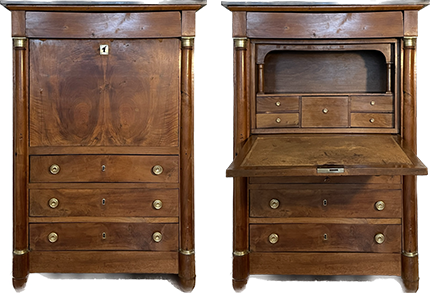
- The lower part of the secrétaire à abattant houses three full-width drawers of different heights, each with an individual lock. The drawers are visible; not hidden by two doors as often featured in drop-leaf secretaries. Brass knobs act as drawer pulls.
- The upper part has a lockable front abattant (translates as drop leaf), that provides, when folded open, a green leather writing surface bordered by a gold border. Featured to the back of the horizontal writing surface is an inside “ledger shelf” framed by two round columns with an architrave with rounded corners that meets both columns. Below the ledger shelf are storage bins formed by five drawers arranged symmetrically around one large central drawer. These provide storage for documents, accessories, and writing utensils.
- A secret entablature drawer, accessed by hidden finger grooves, is above the abattant.
- A single gray marble (fossilized) top extends over three sides of the furniture.
The three display sides of the secrétaire à abattant are veneered; the front is an elegant book-matched veneer. Dovetail joineries are found throughout the drawers.
Although austere in its overall style, the secretary features to each side of the front, symmetrically tapered pilasters with brass capitals that define the upper entablature drawer and reach downward to the feet of the furniture. A second brass element provides a visual transition between each pilaster and the cylindrical front foot.
General information
Height: 54.50 in
Width: 34.75in
Depth: 14.50in
Period: 19th century
Construction: Dovetail for drawers
Style: French Empire or German Biedermeier (Of the Period)
Wood: Cherry veneer on the outside
Additional curiosities from portraits of a collection
Images
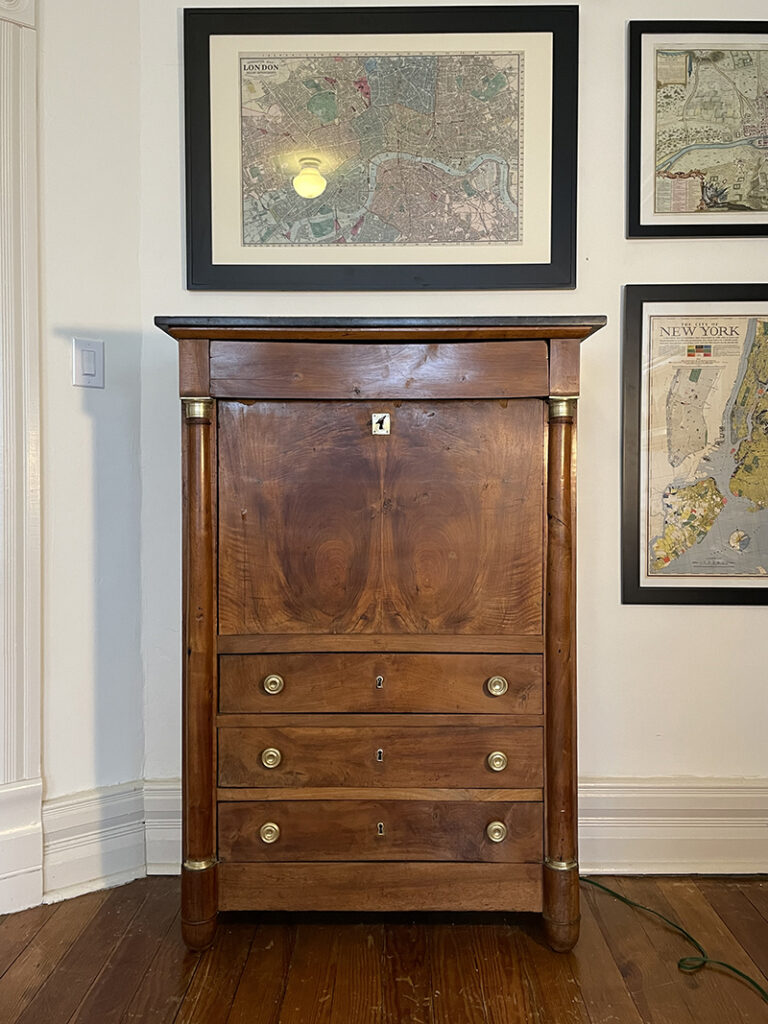
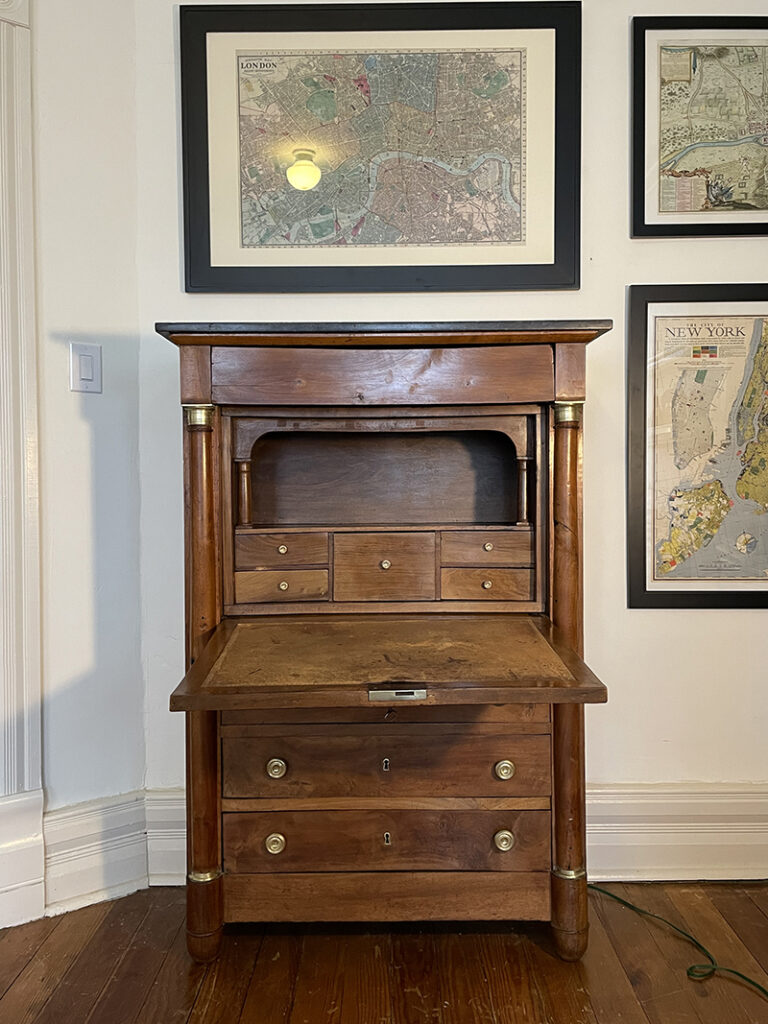
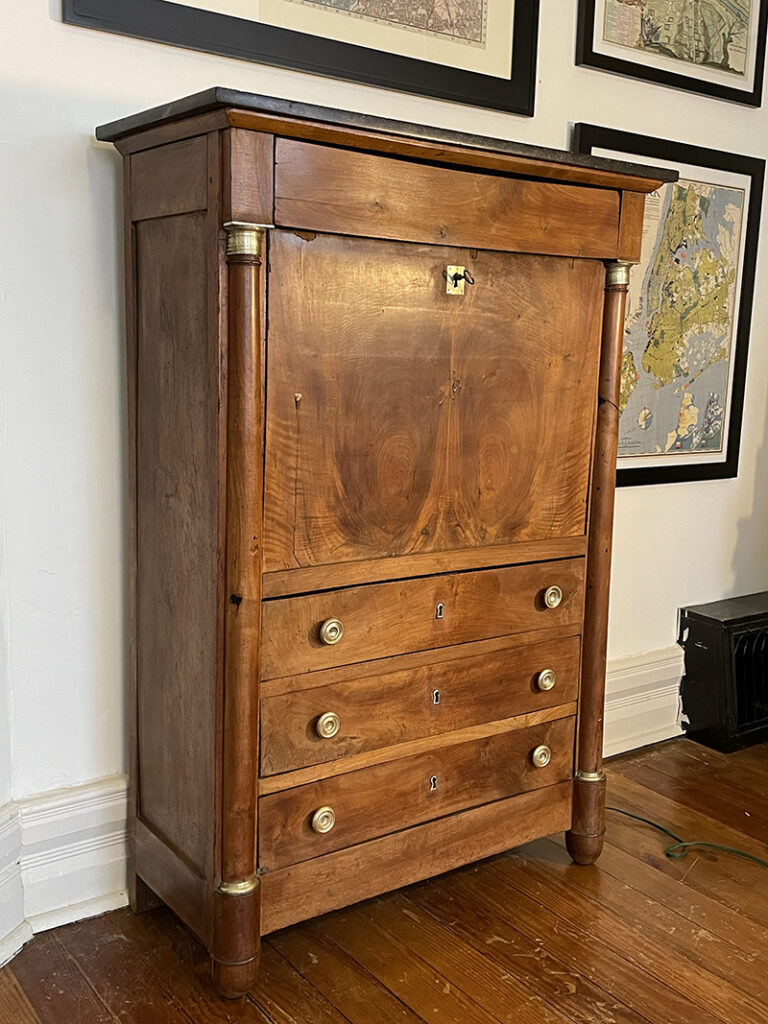
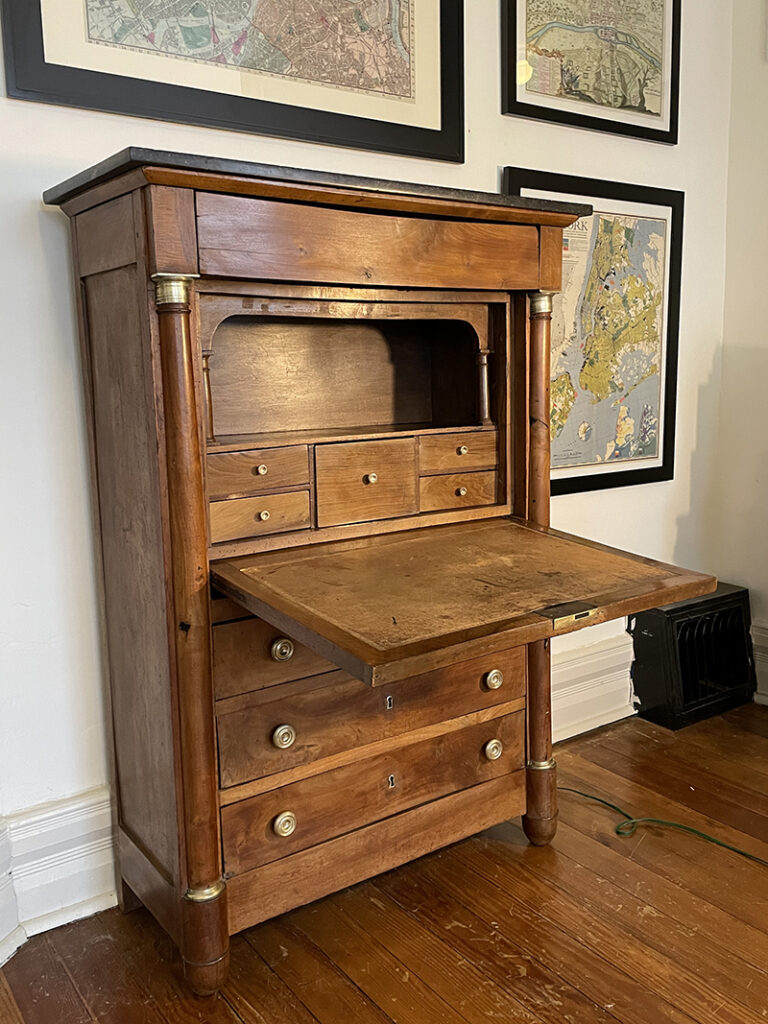
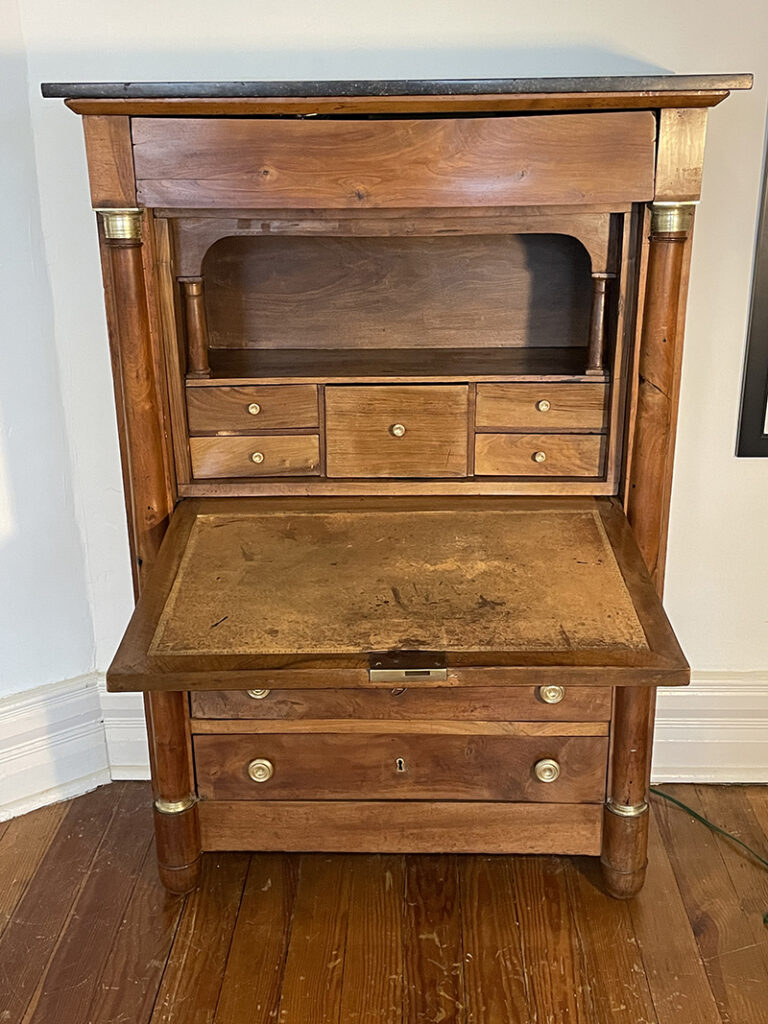
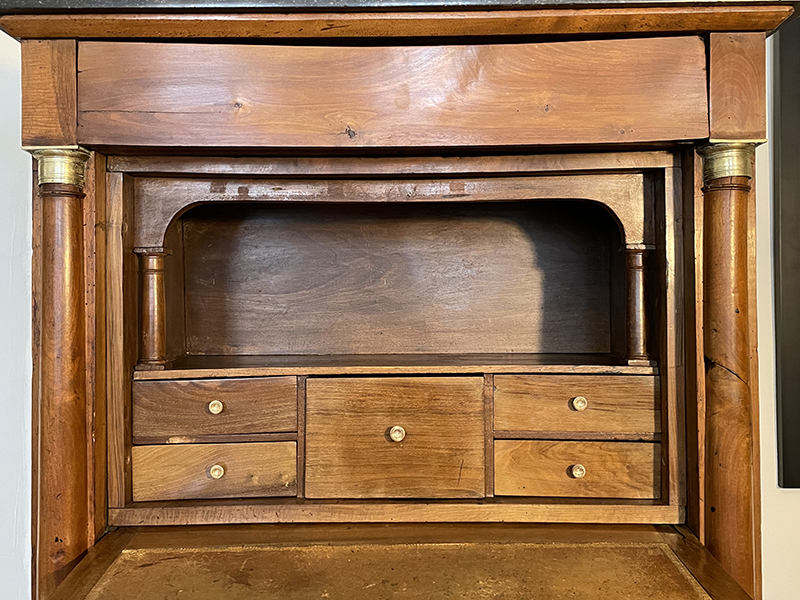
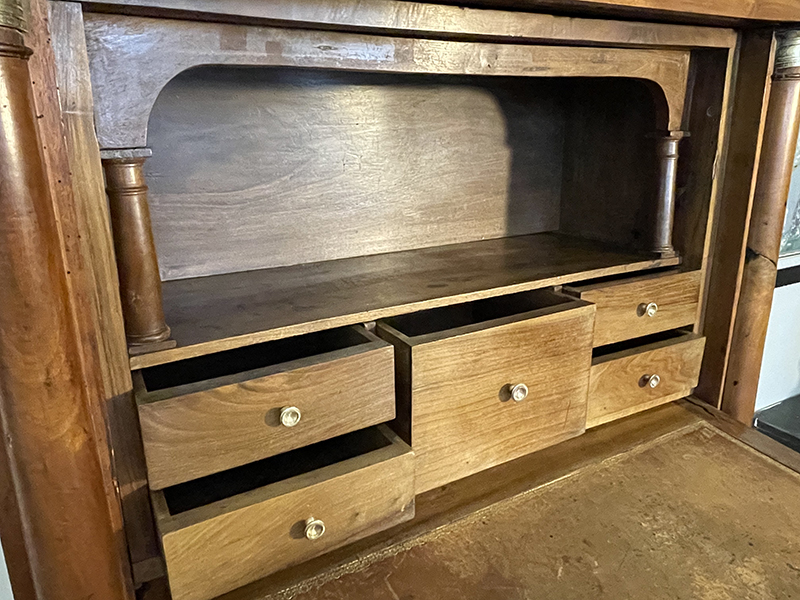
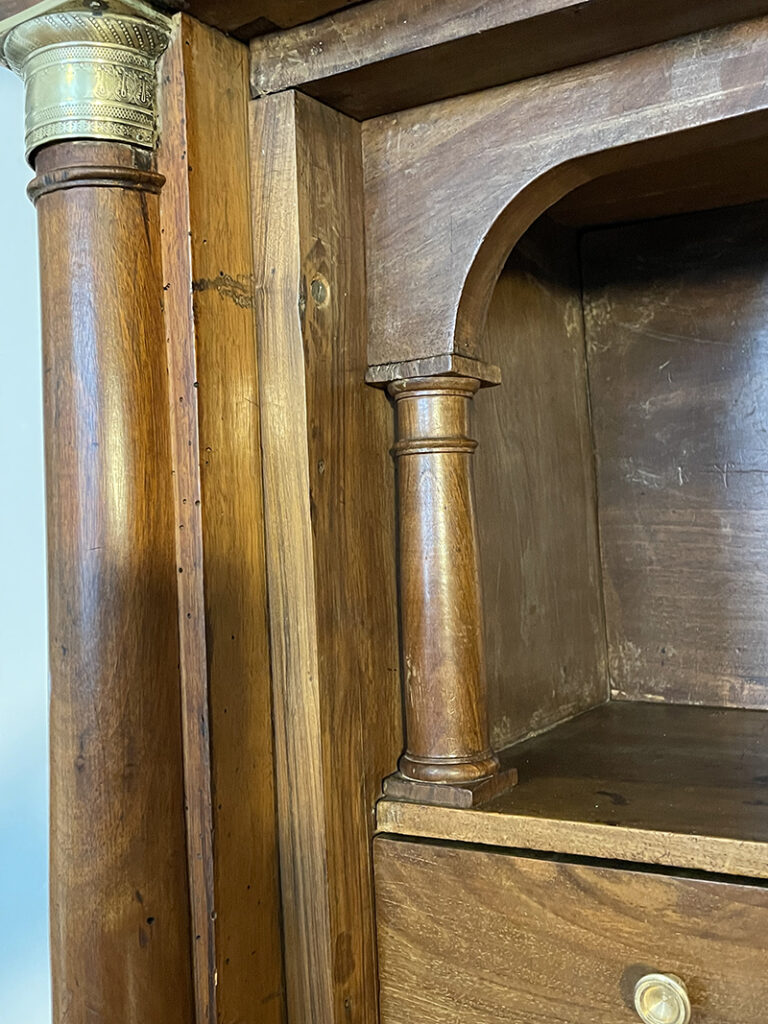

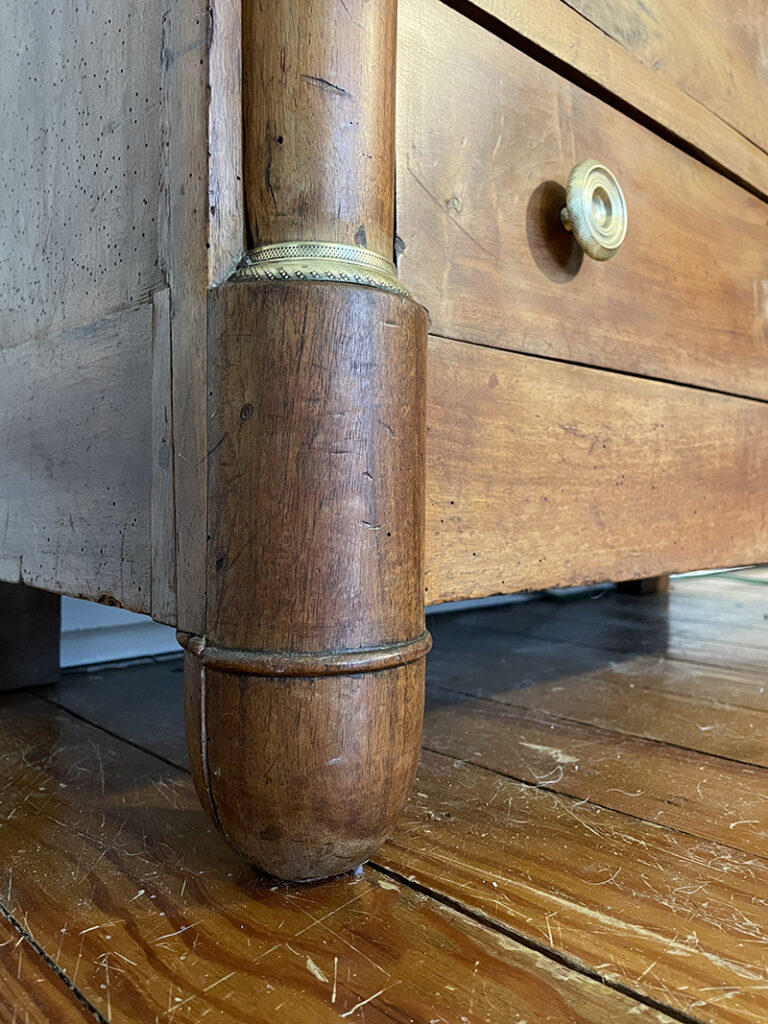
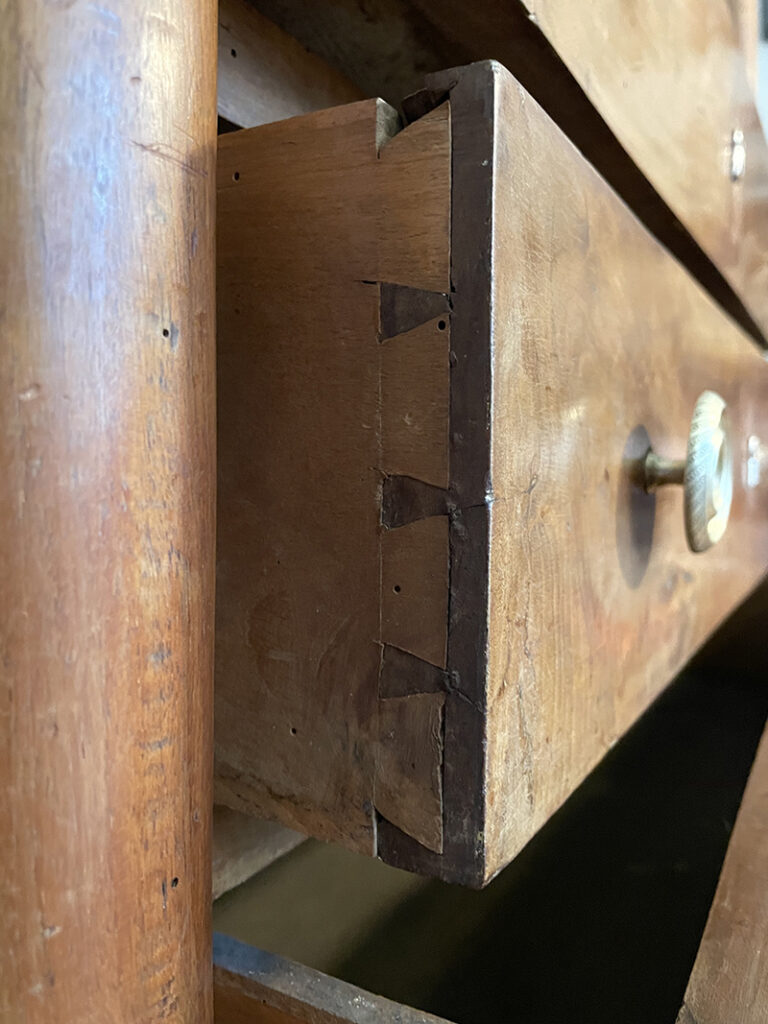
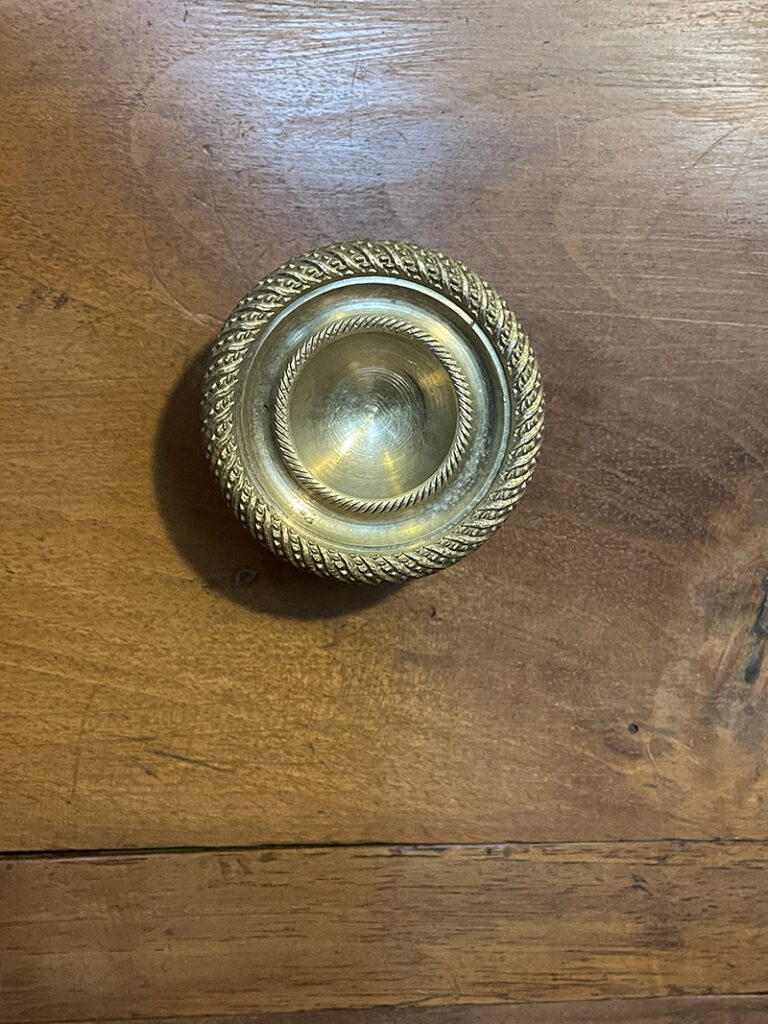

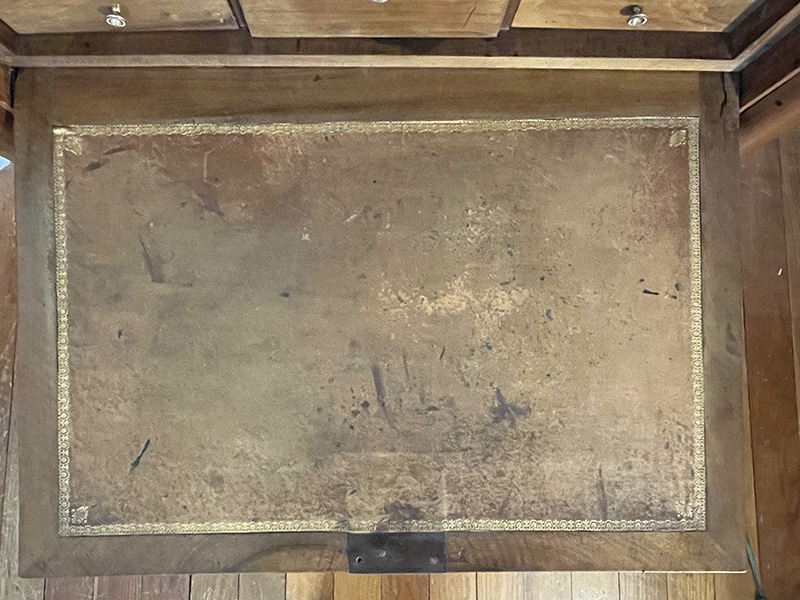
The hinge mechanism on my antique secrétaire à abattant is broken.
I am trying to understand how the hinge mechanism works and I cannot find any where which shows how it should be and how to repair it.
All images show the desk open or shut but there are no images on the actual way the writing part is held when it is open, let alone how to fix it.
Can you help?
Sorry for the late response. Let me make some photos. Do you have an email where I can send the pictures?
Amities,
Henri